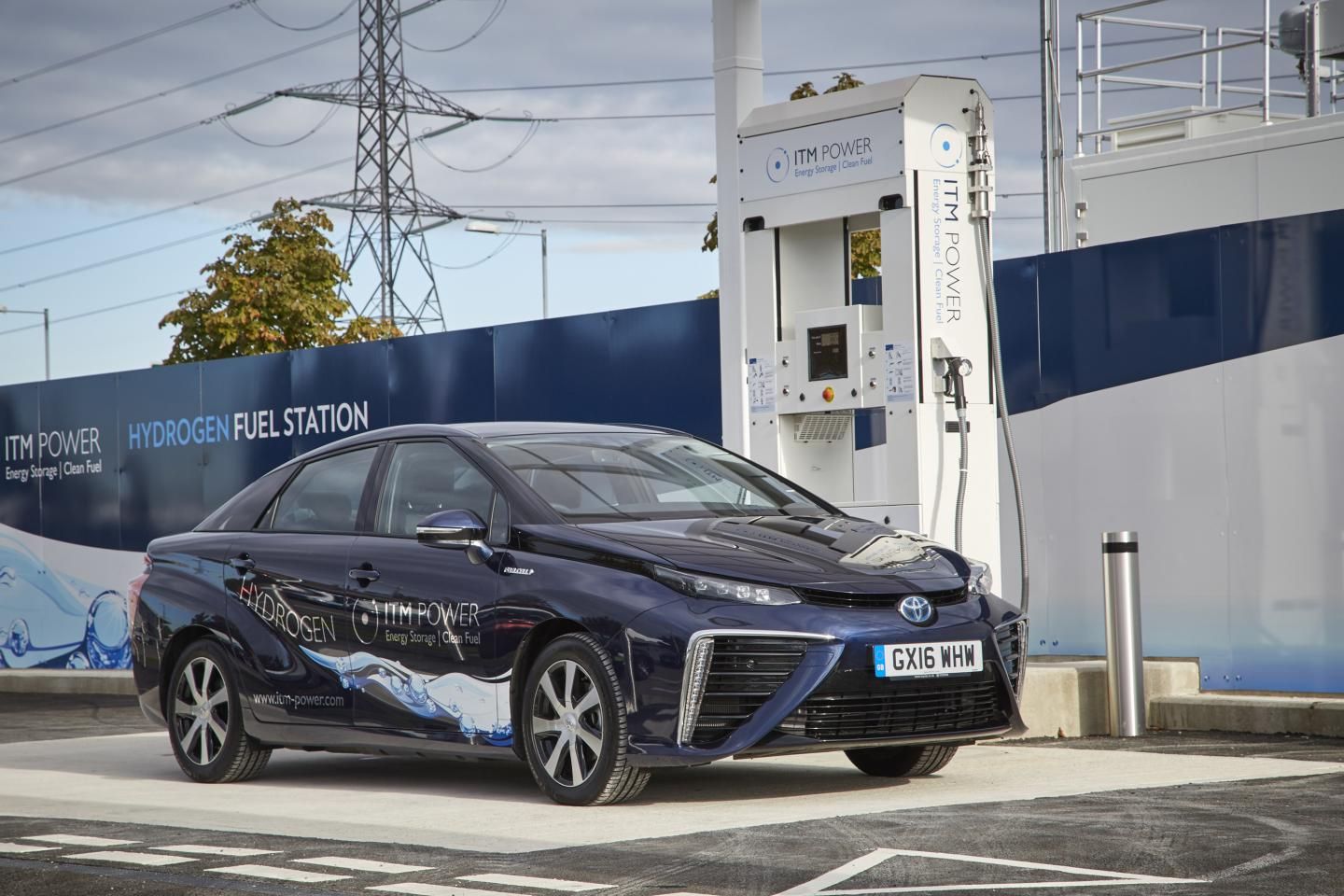
Your future car that emits only water through its tail pipe just got a lot closer to becoming a reality. Scientists have discovered a cheaper metal can be used to spark the necessary reaction in hydrogen fuel cells—and they still have the capability of functioning at a high performance level.
Fuel cells currently use platinum as the catalyst to stimulate the reaction that turns the chemical energy of hydrogen into electricity. But platinum is pricey, which is the main factor that's holding back fuel cells, according to researchers from the University of California, Riverside (UCR) and Stanford University.
A new material developed by scientists at UCR and Stanford could change that by incorporating other metals like cobalt, which is 100 times cheaper than platinum.
"The main driver here is to replace that incredibly expensive platinum with a much cheaper metal [like cobalt, nickel or iron] that is not only embedded with graphitic carbon, but integrated with the carbon structure to allow for faster reactions," David Kisailus, chemical and environmental engineering professor at UCR and senior author of the study, told Newsweek.
Scientists used a process called electrospinning to fuseions from these cheaper metals with graphitic carbon to create a porous, paper-thin material. This new material can be applied to hydrogen fuel cells, which function through a reaction that is sparked by the metal. The reaction triggers hydrogen molecules to separate into protons and electrons. The electrons generate electricity, while the remaining positively-charged hydrogen ions, or protons, link back together with oxygen to create water. By making this process much cheaper, the hydrogen fuel cells could be more readily commercialized.
The new material also addresses the challenge of reducing cars' weight. The material is so thin that it could be embedded into structural parts of the car, such as the hood or the frame. This allows the material to have two functions: aiding the structure of the car and powering it.

"We want to replace some of the body panels of a car with a composite that might be able to perform the function of a fuel cell," Kisailus said. "The goal is to reduce the weight of the car, while enabling function." By having a material that can serve a "dual function," the weight from current batteries or structural materials could be reduced, increasing the efficiency of cars.
The new material was detailed in a study published Monday in the journal, Small. Not only are the findings applicable to hydrogen fuel cells, but metal-air batteries as well. Metal-air batteries are another growing technology that use metal and the oxygen from air to create electricity. Those types of batteries also have "incredible potential in terms of having high energy densities … so you can travel very far on a charge," Kisailus said.
As for commercialization, Kisailus said it will take the right partners and proper research funding. For now, "one challenge will be to demonstrate scalability while maintaining uniformity," he said.
Uncommon Knowledge
Newsweek is committed to challenging conventional wisdom and finding connections in the search for common ground.
Newsweek is committed to challenging conventional wisdom and finding connections in the search for common ground.
About the writer
Sydney Pereira is a science writer, focusing on the environment and climate. You can reach her at s.pereira@newsweekgroup.com.
To read how Newsweek uses AI as a newsroom tool, Click here.








